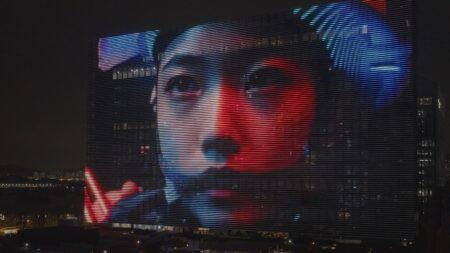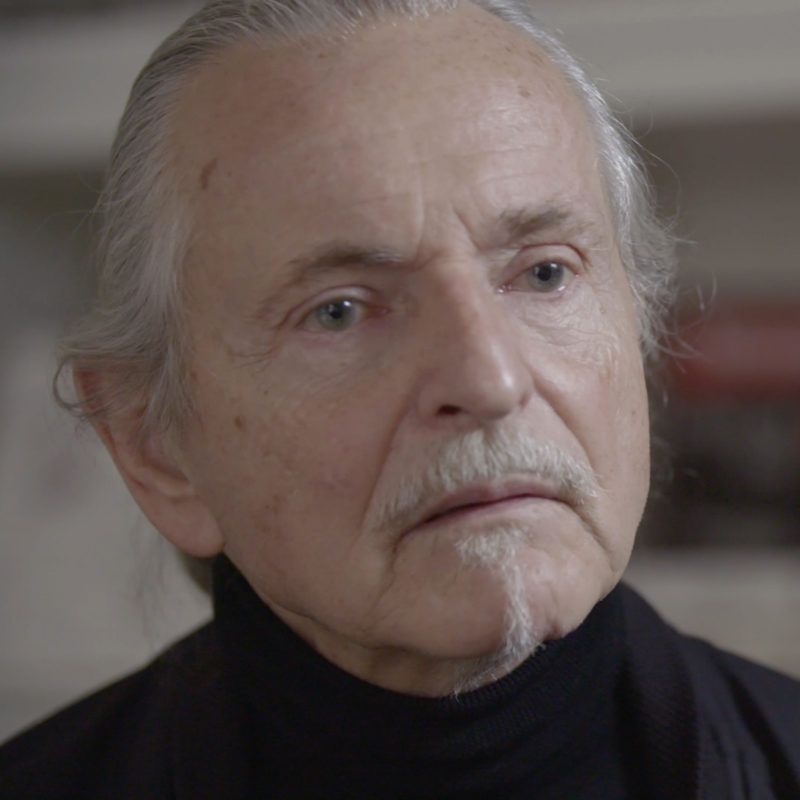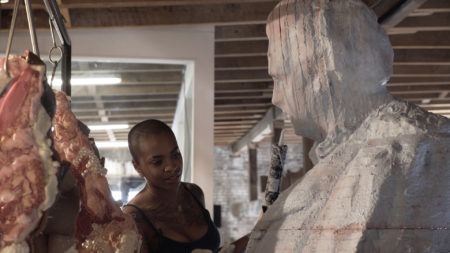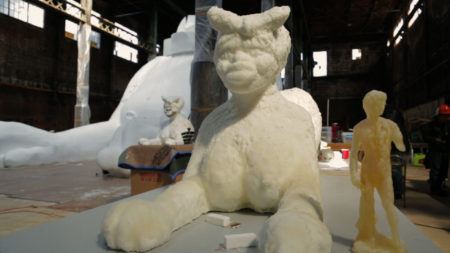Continue playing
(Time remaining: )
Play from beginning
Continue playing "{{ controller.videos[controller.getVideo(controller.currentVideo)].segmentParentTitle}}"
{{controller.videos[controller.getVideo(controller.currentVideo)].title}} has ended.
Monument for the LivingKrzysztof Wodiczko
Visit our Awards page for this film’s honors and recognition.
Video and installation artist Krzysztof Wodiczko amplifies the voices of refugees with Monument, his 2020 site-specific commission for Madison Square Park in New York City. From his Manhattan apartment, Wodiczko shares his early drawings of the project, where he conceived of how he would project video onto a prominent 1881 monument to Civil War admiral, David Glasgow Farragut. “It was very important for me to imagine how this statue can be animated with the projection,” says the artist. Monuments carry special significance for Wodiczko, as sites for public gatherings and protests, witnesses and recorders of history, and blank canvases upon which new narratives can be painted.
With Monument, Wodiczko decided to project video likenesses and spoken narratives of resettled refugees onto the Farragut statue. As Wodiczko explains, “There are more than 70 million refugees; people who are forced to leave their home countries because those countries are engaged in wars…to actually see a refugee speaking is a very rare opportunity for the public.” During a video mapping projection test in the park before the opening of the installation, Wodiczko makes sure that the faces and hands of the refugees from his recorded interviews with them align with the Farragut statue’s own body. As the final work plays in the darkened park each evening, passersby hear the refugees’ difficult and at times heartbreaking stories. The artist sees this as both a moment of catharsis for the refugees who collaborated with him for this project, but also a way to make monuments relevant to contemporary life, “so that we can build a better future, maybe a future in which some of those monuments, like war memorials, will never need to be built, because there will be no wars and no refugees.”
Credits
Producer: Ian Forster. Interview: Ian Forster. Editor: Misha Spivack. Colorist: Jonah Greenstein. Camera: Jarred Alterman and John Marton. Production Assistant: Sara Schwartz. Music: Blue Dot Sessions. Artwork Courtesy: Krzysztof Wodiczko and Madison Square Park Conservancy. Archival Material: International Rescue Committee.
Extended Play is supported by The Andy Warhol Foundation for the Arts; and, in part, by public funds from the New York City Department of Cultural Affairs in partnership with the City Council; the Art21 Contemporary Council; and by individual contributors.
Closed captionsAvailable in English, German, Romanian, Italian, Japanese, Korean, Chinese, Italian
Through the Art21 Translation Project, multilingual audiences from around the globe can contribute translations, making Art21 films more accessible worldwide. Translate this video now.
Interested in showing this film in an exhibition or public screening? To license this video please visit Licensing & Reproduction.
By appropriating public buildings and monuments as backdrops for projections, Krzysztof Wodiczko focuses attention on ways in which architecture and monuments reflect collective memory and history. Projecting images of community members’ hands, faces, or entire bodies onto architectural façades, and combining those images with voiced testimonies, Wodiczko disrupts our traditional understanding of the functions of public space and architecture. He challenges the silent, stark monumentality of buildings, activating them in an examination of notions of human rights, democracy, and truths about the violence, alienation, and inhumanity that underlie countless aspects of social interaction in present-day society.
“We have to help [monuments] to be useful for the living, making them relevant to us so we can build a future—the better future.”
Krzysztof Wodiczko
Monumental
Kara Walker




